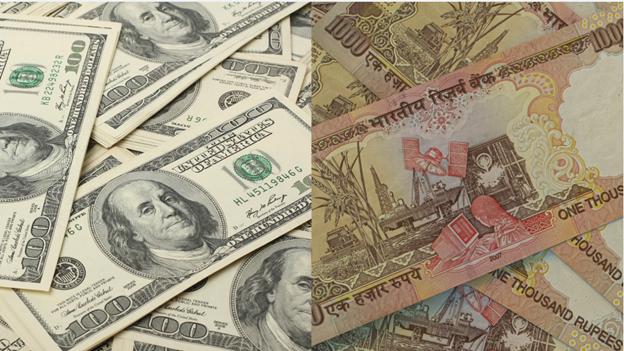USD/INR edged lower as the Indian rupee strengthened, driven by likely intervention from the Reserve Bank of India (RBI) and broad-based selling pressure on the US dollar. The currency pair saw downward pressure as traders noted increased activity from the central bank, aimed at stabilizing the rupee amid global volatility.
The US dollar weakened as markets reassessed the Federal Reserve’s policy outlook, with investors trimming long positions in the greenback. Signs of slowing US economic momentum have fueled speculation that the Fed could adopt a more cautious stance, prompting a shift in positioning that has benefited emerging market currencies, including the rupee.
India’s robust economic fundamentals have further supported the local currency, with steady foreign inflows and resilient domestic demand keeping investor sentiment positive. Despite external headwinds, the rupee has managed to hold firm, reflecting confidence in India’s macroeconomic stability and expectations of continued growth.
Meanwhile, crude oil price fluctuations remain a key factor for USD/INR, given India’s status as a major importer. A pullback in oil prices has eased concerns over India’s trade deficit, reducing pressure on the rupee. However, any renewed spike in energy costs could limit further gains and keep USD/INR volatile in the near term.
Market participants remain focused on upcoming US economic data and RBI’s policy signals, which could determine the next direction for the currency pair. If the RBI continues to intervene aggressively, USD/INR may face further downside, but a rebound in the US dollar could cap the rupee’s strength.
Analysts expect continued fluctuations in USD/INR, with external developments and central bank actions playing a critical role. With global financial conditions evolving, traders will closely watch policy decisions and macroeconomic trends to gauge the rupee’s trajectory in the coming weeks.













